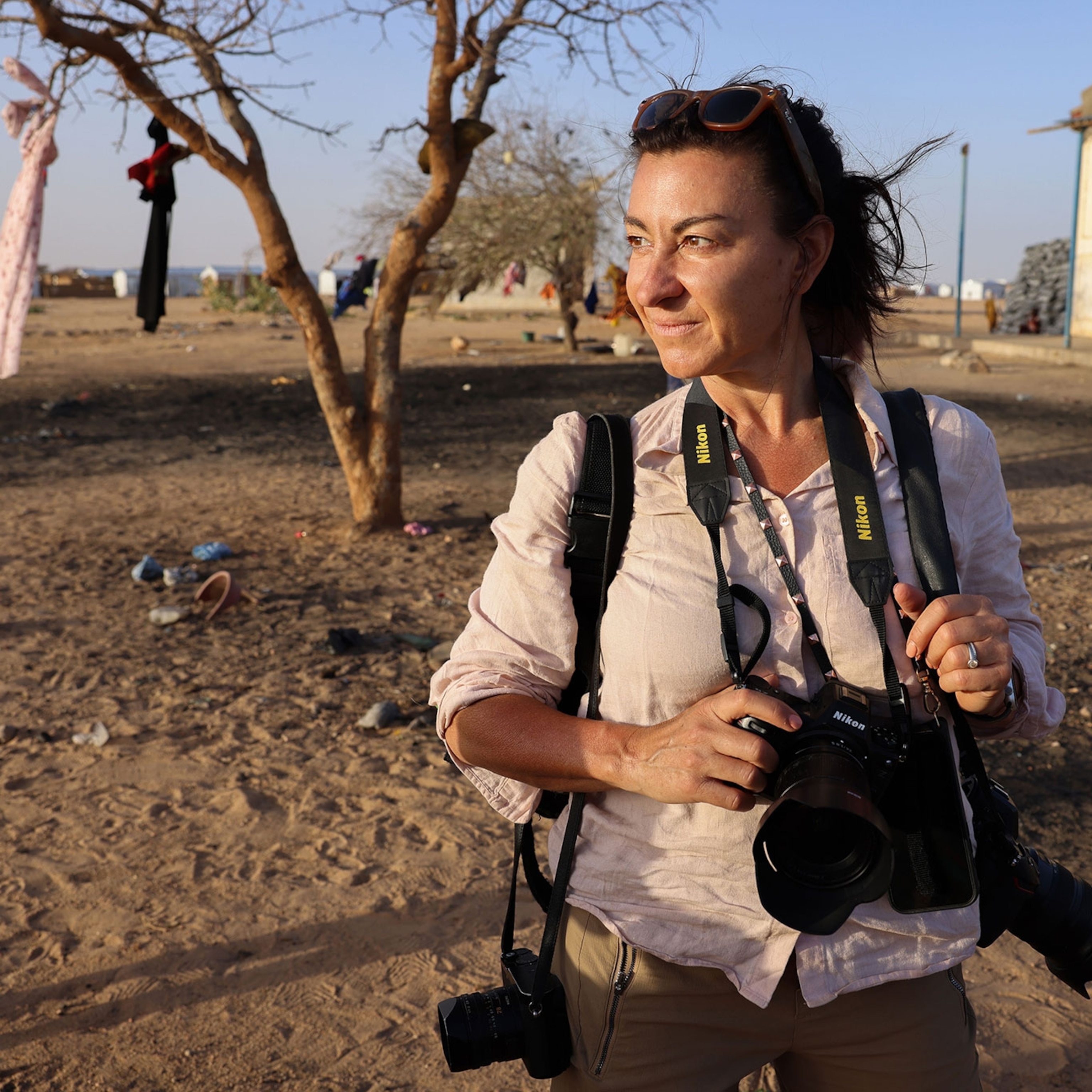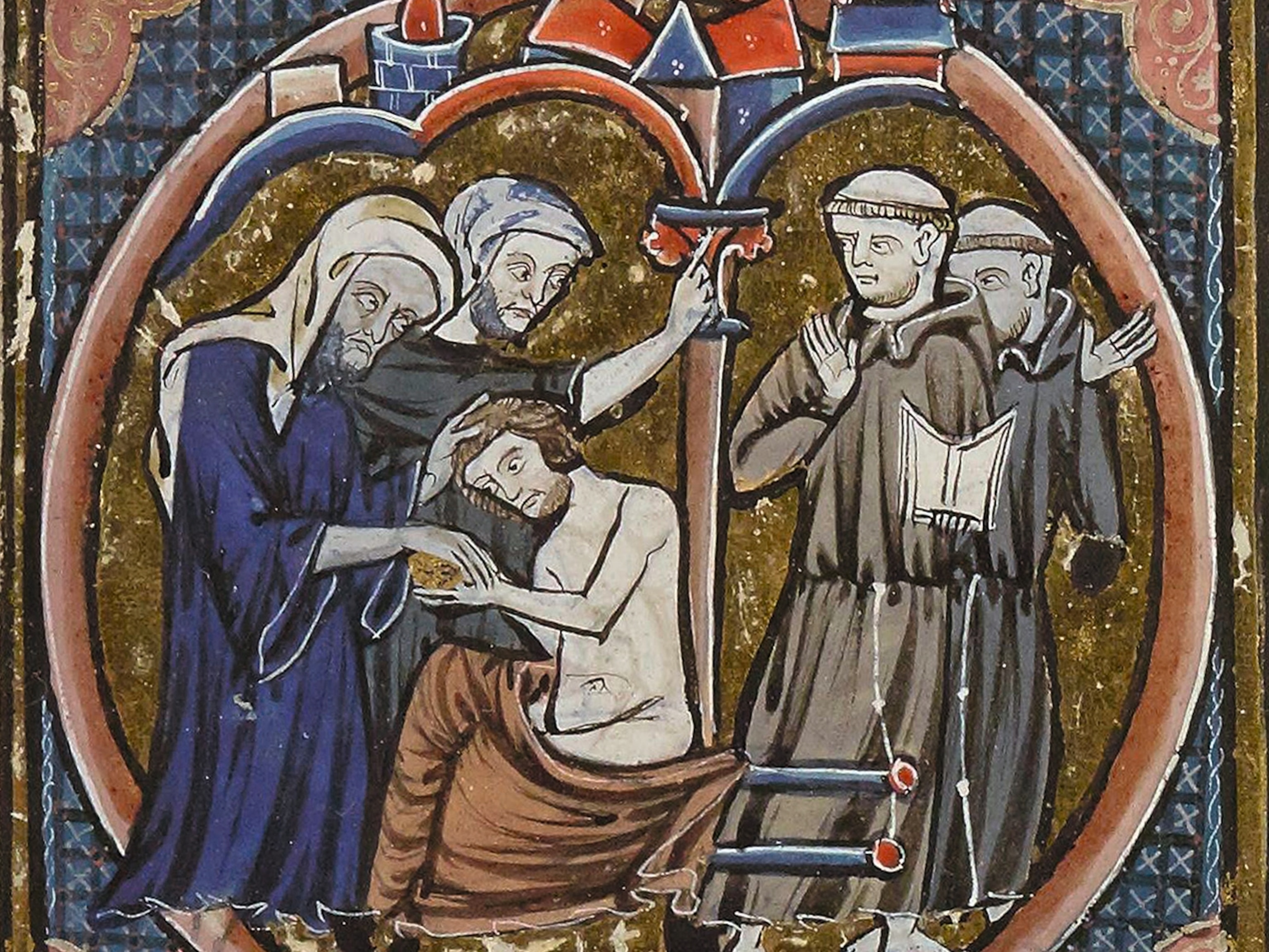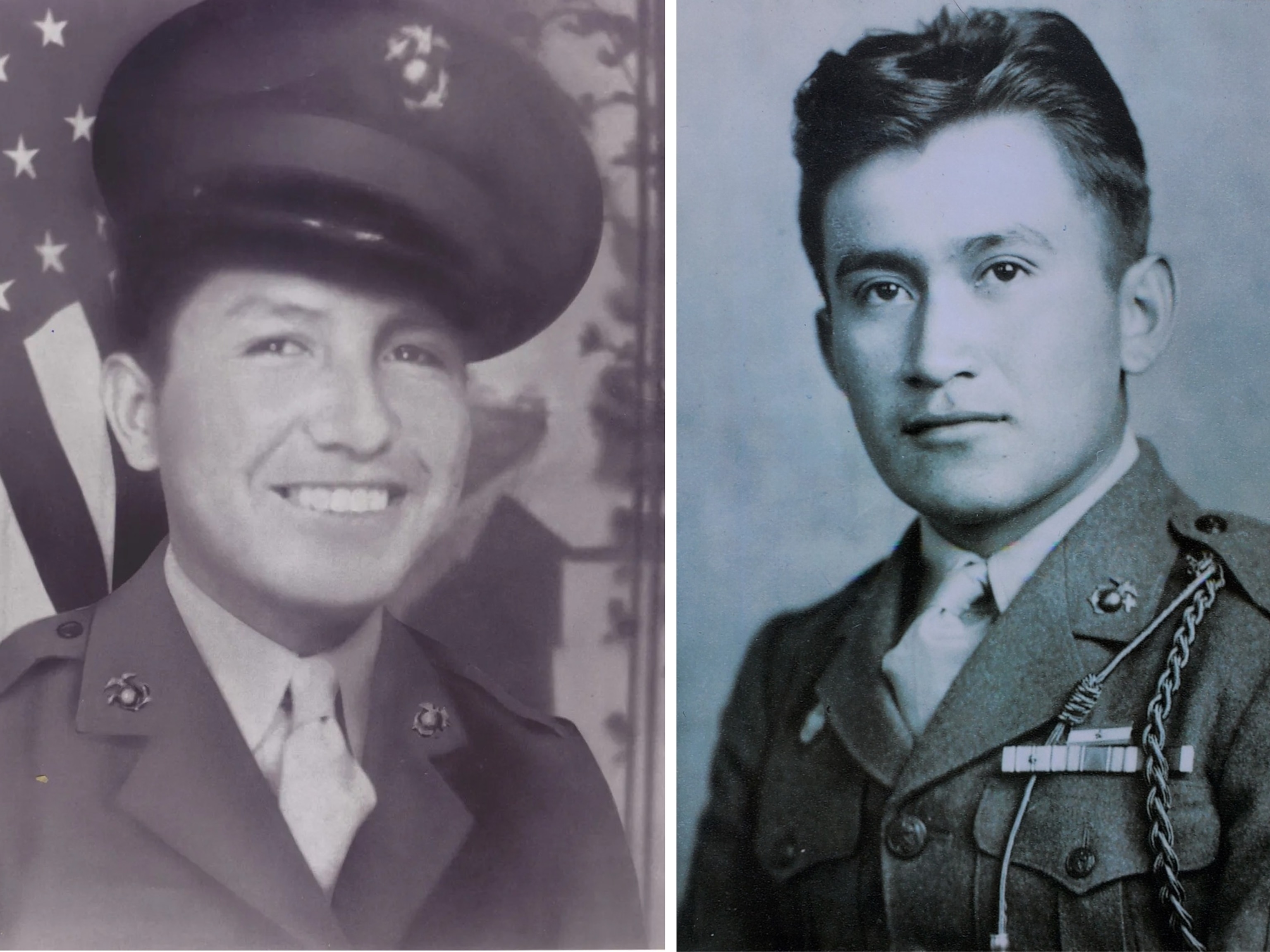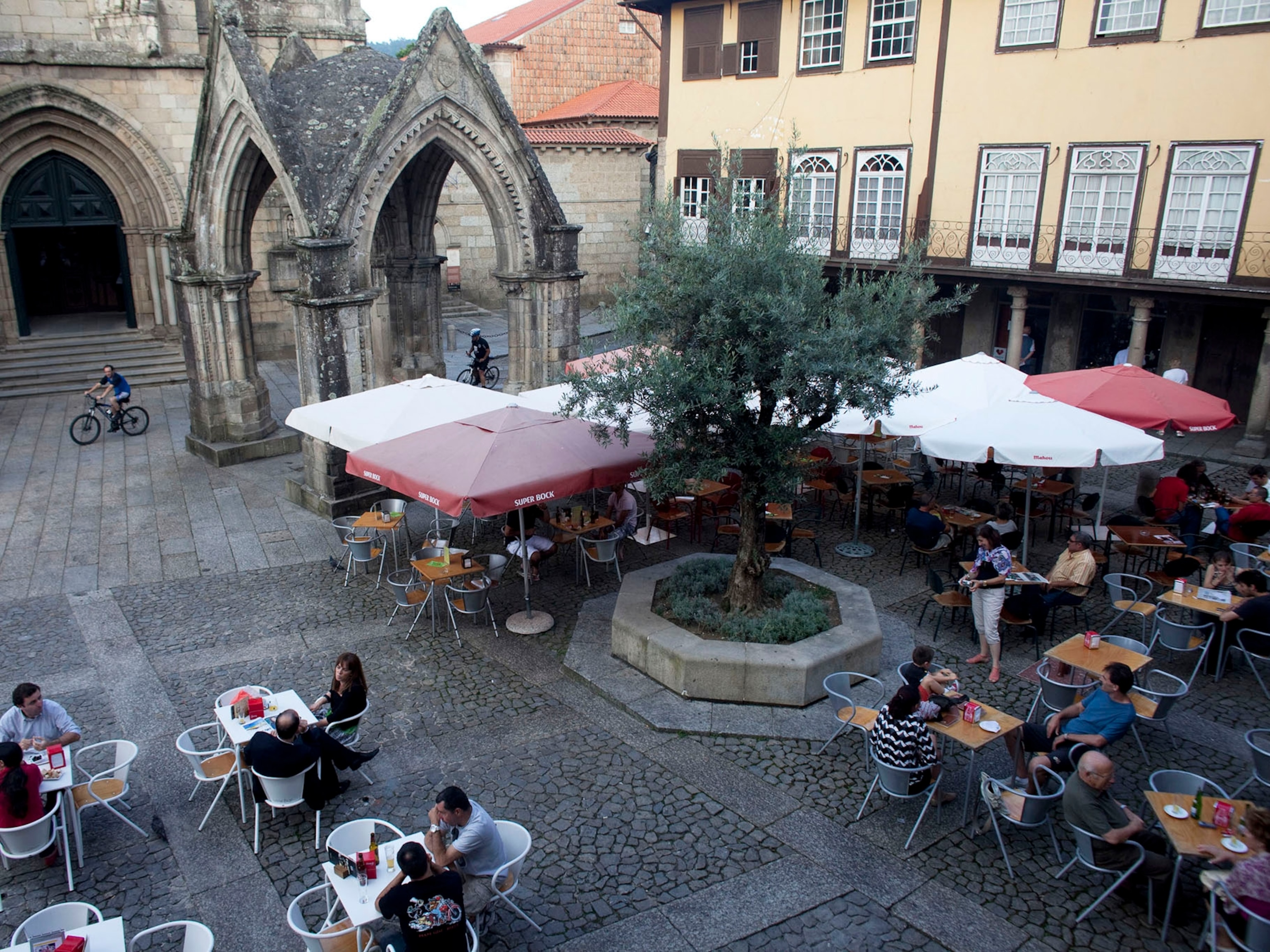
How a 2,000-Mile Trail Helped Define The American Mindset
An author retraces the Oregon Trail in a covered wagon and learns about mules and the importance of seeing America in slow-mo.
Many books have been written about the Oregon Trail, the 2,000-mile-long route across the High Plains that shuttled millions of pioneers to the American West. But when award-winning journalist, Rinker Buck, discovered that no one had made the epic journey by covered wagon since 1909, he jumped at the chance.
Growing up on a horse farm in New Jersey, he was familiar with driving mule teams and having roped in his brother, Nick, they set off together across America. The Oregon Trail: A New American Journey is the story of that epic crossing.
Talking from his summer home in Maine, he describes how the Oregon Trail shaped the American character; why it is important to travel slowly; and how methamphetamine is leaving a trail of tears in the footprints of the pioneers across today’s Midwest.
You come from a family with 11 children. How did you end up with a name like Rinker?

[Laughs] My parents were very ambitious for unique names. The first four children, Dempsey, Turniham, McNamara, Rinker, were named after our grandparents’ surnames. After that it became Bridget, Brian, Patty, Nicky, because they ran out of original names. My grandmother was a Rinker, a Swiss-German name from Pennsylvania. So, I’m Rinker. Everyone has always told me, “That’s a great name. You better become a writer.”
You had this crazy idea to retrace the trek the pioneers took by covered wagon from Kansas City, Missouri, to Portland, Oregon. What possessed you?
It was pretty much serendipitous. I was out in Kansas and took a hike along the Oregon Trail. I’m a history nut, one of these guys who buy out every museum bookstore. Two things annoyed me. The first was that I didn’t know more about the Oregon Trail, since my real love is 19th Century America. Second, when I started reading up on the Trail, I was astonished at how different the actual history was from the myths passed down to us as school children.
Women played a much more prominent role developing the Trail; the Indians were friendly. I was planning to write a ‘normal’ book, then I ran across a statement in one of the history books that said, “The last documented crossing of the Oregon Trail by covered wagon was in 1909.” I said, ‘Oh, that’s a better book.’
My brother and I grew up on a horse farm; we know how to drive teams, and that enabled me to say, ‘Well, I can do that.’ So, we did.

Why is the history of the Oregon Trail important to American history?
It’s vital. Between 1843 and the Civil War about a half million American pioneers crossed from around the Missouri River to the Columbia River on the Pacific Coast. After the Civil War, another half million crossed.
That was mainly the stagecoach era, although homesteaders continued to cross in covered wagons up until the 1890’s. It’s also vital for the mindset of the Americans. This 2,000-mile trail across the High Plains completed America as a continental space.
In many ways it also defined our character: the clash of ethnic groups, the determination to succeed no matter the hardship. So many of the issues on the trail, like economic scams by outfitters, religious and ethnic battles, resonate through America today.
I found it fascinating that initially the indigenous people were helpful to the pioneers. It was only after the American government reneged on its promises that the Indian Wars began. Can you tell us about the Plains Indians and how they suffered from this mass migration?
When the White Man came along in the 1840’s in their covered wagons, [the Indians] saw opportunities to trade. They bartered with immigrants for trinkets, supplies and horses. They were very helpful at first. In fact, the ingenuity of the Indians in crossing the rivers was a crucial aspect of the Oregon Trail. You have to ford numerous rivers, and the Shoshones, Pawnees and Sioux, were extremely adept at helping the pioneers make these fords.

For about 20 years it was very friendly as opposed to the impression that you get from Hollywood movies. But when the Indians realized the White Man was there to slaughter the buffalo, their protein source—and we did, in hellacious numbers—they turned hostile and declared war. They’d also made several treaties with the Great Father in Washington, all of which had been violated. Disease had also decimated their ranks. Plus, the inequality of weapons made it very difficult for them to prevail.
Mules are an essential part of the Oregon Trail history. Can you tell us about your relationship with your mules, Bute, Beck and Jake? What did they teach you?
Getting mules from Europe after we broke off from Great Britain was a huge advance for American society because mules can do so many things better than horses. Because of interbreeding with the wild feral burro, mules have slightly larger cranial capacity and are believed to have higher intelligence, even though people interpret that sometimes as being ornery. They won’t go places horses will go unless they’re reassured that they’re safe.
You have to be constantly “ calling” them, so they know you’re on their side and not going to put them in danger. We were riding along one day and Beck, one of the more crazy mules we had, saw a No Hunting-No Trespassing sign made out of an old truck tire hanging on a fence in Nebraska. She started jumping sideways, like it was a Bogey Man.
A bad mule call would be, “You dumb-ass mule, get going!” Good mule handling, even though you’ve got your feet braced on the footboard and you are pulling with all your might to stop this mule, is, “It’s OK, Beck, good girl; it’s OK, it’s just an old tire.” She hears from the tone of voice you are going to keep her safe.
I have to confess my brothers and I are also completely different and if we had undertaken the task you and your brother, Nick, did, we would have killed each other. How were you two able to get along for such a long period of time?
We’re very different. I’m sort of refined, a writer and college educated. My brother, Nick, is very blue collar and gruff and considers, probably correctly, that anybody with a college education has destroyed their brain and is of no use to society.
But we come from a pretty rugged, tough family and so we were competing like the mules were to show that we had more persistence than the other. Our skill bases also complimented each other. I’d been studying the trail for months and could call ahead and organize everything. Nick was a really great driver.
Whenever anything broke, he could fix it. And we had a lot of breakdowns! I would go over to Nick and say, “Hey, can I help you with these fixes?” He would say, “I don’t want your college-educated butt anywhere near this wagon until I’m done.”
People think that good management is telling people what to do. What I learned on the Oregon Trail was that good management means disappearing as a person, not being dominant or ever giving orders, but allowing each of our personalities to do what they could for the trip.
The Donner Party was the most notorious story of murder and cannibalism on the Oregon Trail. Set that story in the social context of the American ethos.
In 1846, the Donner Party became famous throughout America. They were going to California, across the Sierras. You always tried to get over them by October because it starts to snow that early up in the Rockies. But they left late and got trapped. The story is that, as people died, they ate the bodies, though archeological research at the site pretty much confirms that there probably wasn’t any cannibalism. No matter, it got into the tabloids and was a big story of the day.
What I found in the trail journals was that by the time the pioneers got into the Wyoming desert there were short tempers and a lot of competition for water. A lot of wagon trains had cattle with them, for food. Whenever they crossed a river the cattle would get mixed up, and there’d be tremendous fights over whose cattle was whose. People would pull their guns out and start shooting each other.
I feel that the Oregon Trail years and the stresses and the tensions of the crossing introduced this kind of violence into the American ethos. It’s kind of the standard default of Americans. If things aren’t going right, we pull out a gun. Unfortunately, we’ve seen our share of it in the last couple of years.

What were your interactions like with people along the way? Were they interested in your mission?
This was one of the most touching things of our trip: the natural generosity and openness of the American West. On the plains, you could see a covered wagon coming from 30 or 40 miles away. Sometimes, we would get to the intersection and there’d be two ranchers having an argument. “He’s coming to my place!” “No, he’s coming to mine!” It was unending hospitality. Women would take one look at us and say, “Guys, you’re coming back to my house and you’re gonna get a shower.” Everyone wanted to help us.
You had a sign on your wagon—tell us about that?
My father loved horses and carriages and one year he decided it would be a good thing for the family if we took a covered wagon trip between our farm in New Jersey and Pennsylvania. In those days the roads weren’t that busy. But he thought if traffic backed up behind us he should explain to people why this covered wagon was running along the roads in 1958.
So, he had a sign painted that said, “We are sorry for the delay but we want our children, and then in big letters, TO SEE AMERICA SLOWLY.” My brother still had that sign. So, we flipped it over, painted it white on the bare side and we printed in the same type, “We are sorry for the delay but we want to SEE AMERICA SLOWLY.
Why is it important to see it slowly?
One little example: in Kansas, early in the trip, we passed through areas that were rural but still relatively inhabited with little housing developments here and there. The children would see us coming from way across the plains and by the time we got to their driveways they would run out with bags of apples and buckets of water in their little red wagons because they wanted to feed the mules.
I began to notice that the parents of these children were the wrong age. They were all grandparents. I finally asked one man about it and he said, “Oh yeah, you’re gonna see a lot of that as you cross the West. The methamphetamines epidemic and the recession of 2008 combined to make the parents of many of these children spin off into drug abuse.”
You never would have seen that if you were speeding by in a minivan. A slow-moving, covered wagon, travelling at about four miles an hour, turned out to be an almost ideal vehicle for a social observatory to understand and see the America of today.

How did making this historic journey change you and your perspective on what the pioneers accomplished?
It made me more confident of dreams. I’m this guy who sits around and reads stuff in books. This trip affirmed that you have much deeper wells of persistence and strength in you than you think.
What it told me about the pioneers? America was a very unstable country then. In just about every decade there was a major financial panic. In the panic of 1837 half the banks in America closed; farmers couldn’t buy seed and lost their farms. On a really hot, rough day when Nick and I were crossing the trail, we looked at each other and said, “Nobody would do this unless they had to.” That was my big insight. These were people who were brave in the face of catastrophe. They were forced to go. But somehow they managed and survived.
Simon Worrall curates Book Talk. Follow him on Twitter or at simonworrallauthor.com.






